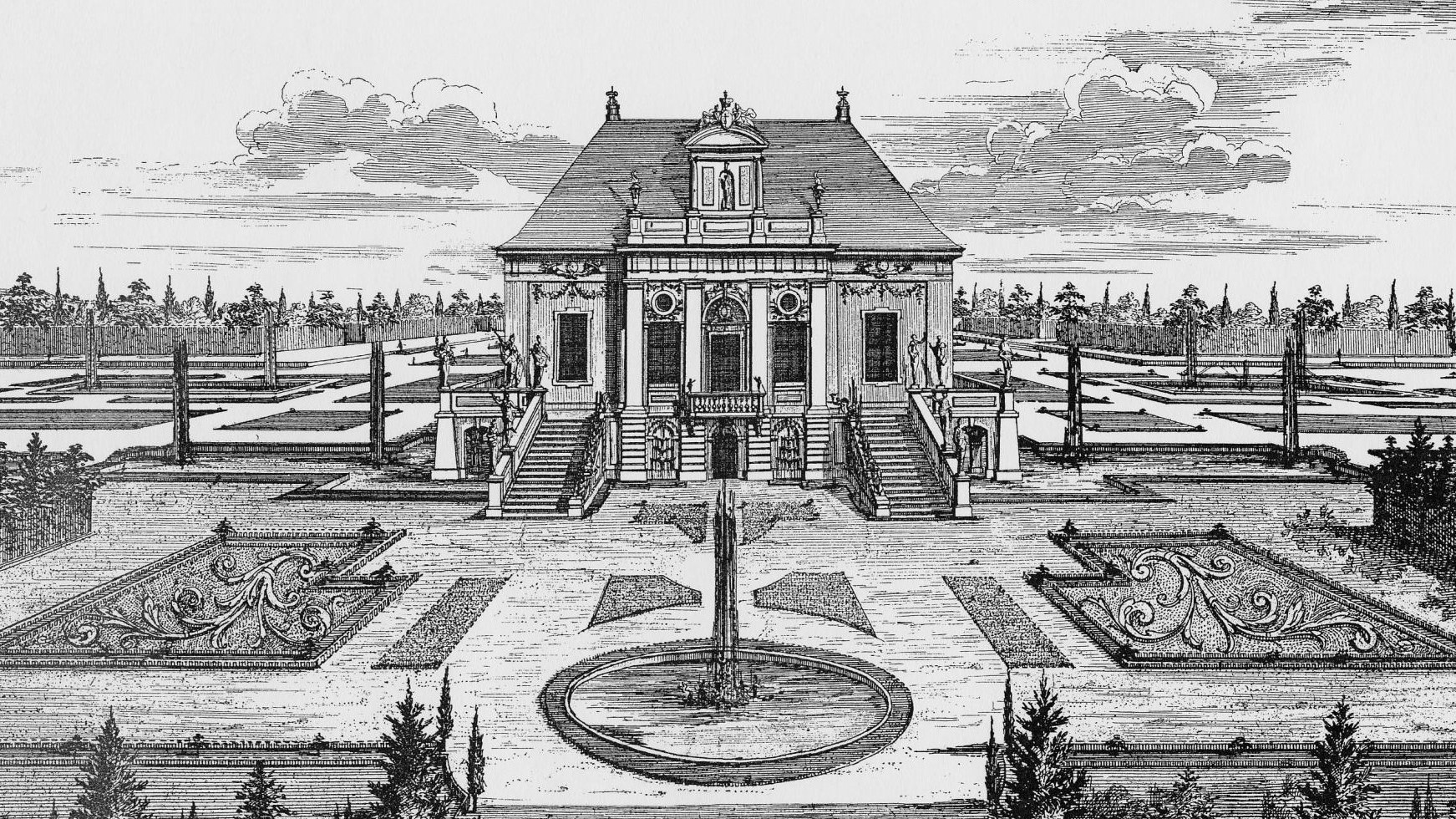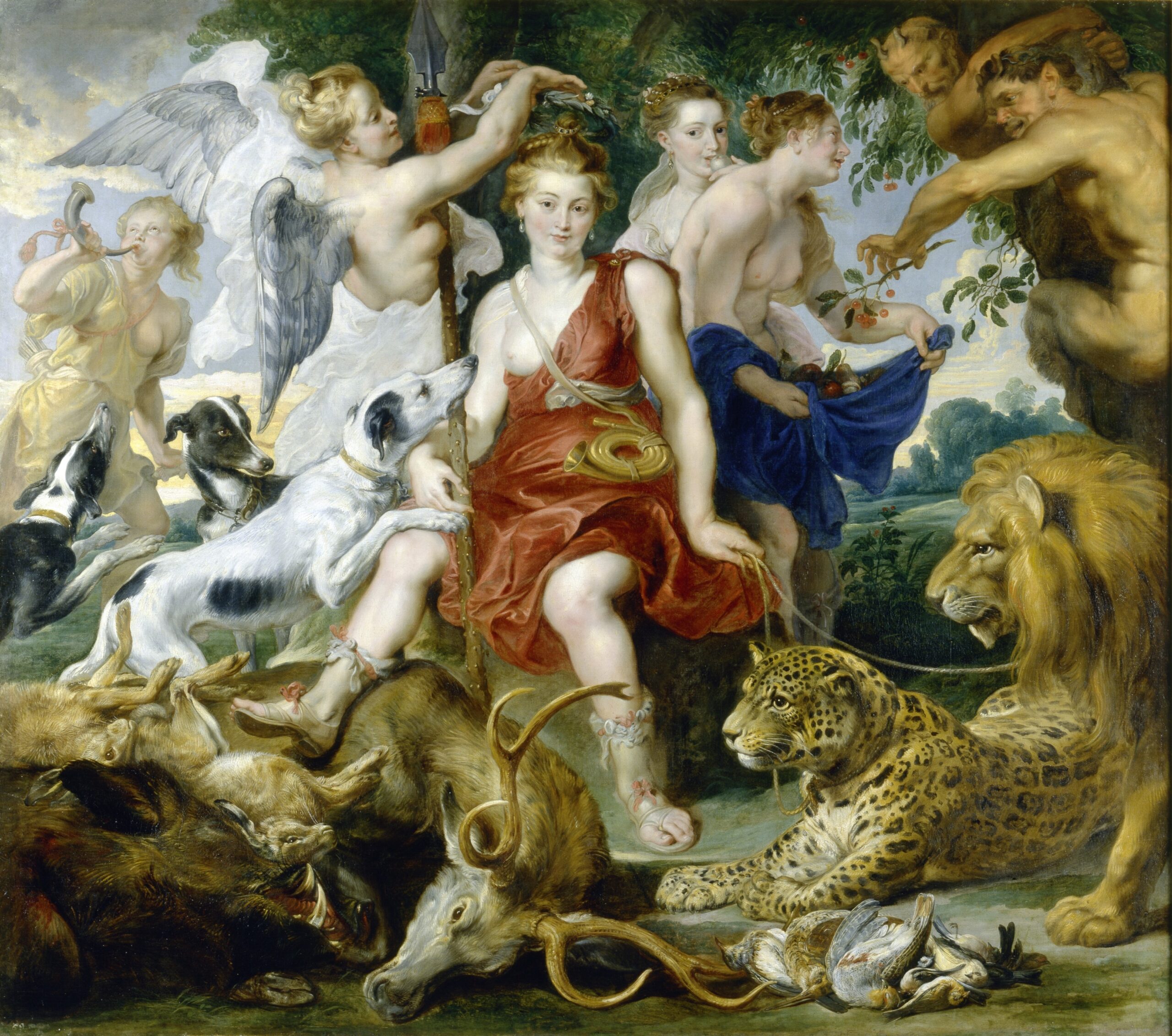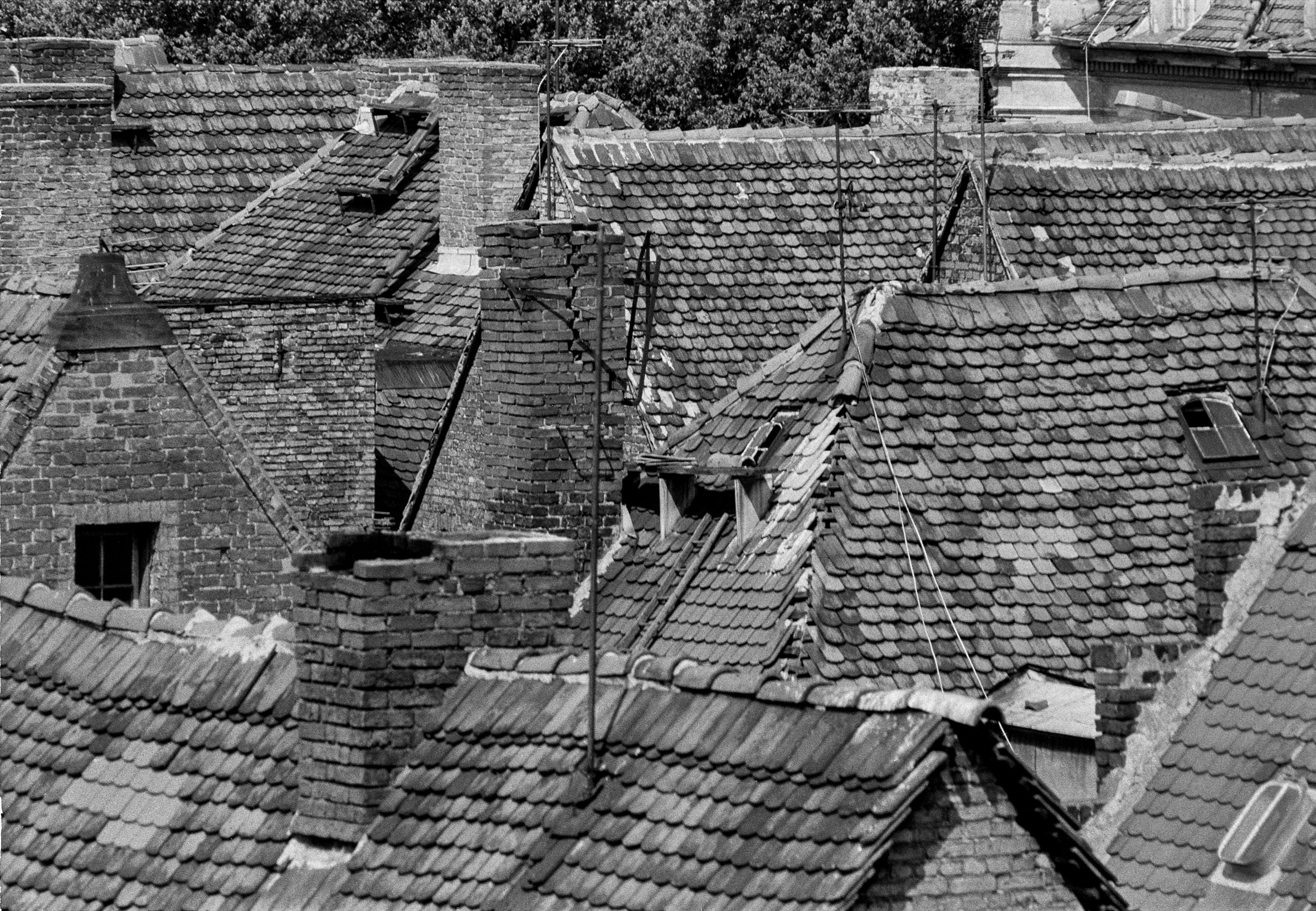
The Photographer Thonfeld in the Dutch Quarter
At the end of the 1970’s, when the young student of photography Eberhard Thonfeld strolled through the Dutch Quarter of Potsdam — first accidentally, then with a mission – he discovered a whole cosmos: it was strange, but exciting and something that wouldn’t let him go.
Erected between 1733 and 1742, this baroque quarter was almost untouched by the war but in a state of decay by the time Thonfeld arrived. Streets are bumpy, roofs are full of holes, the facades and courtyards often ruined. Eberhard Thonfeld chooses the Dutch Quarter as the theme of his thesis and starts with a kind of “crime scene photography” — making pictures to record the historic process of decay. In the process, he is more interested “in the content than in form”. He wanted to pass on emotion und tell stories:
These people weren’t interested in being photographed for posterity, they were shy and retreated into the privacy of their homes – and it was this that revealed a very personal impression of their lives.
Eberhard Thonfeld, 2022
Thonfeld builds trust in long conversations, but the act of photography itself is quick. Working almost exclusively in black and white, without tripod or flash, the light-sensitive material yields grainy results. With portraits and carefully chosen crops, the photographer comes closer to a life that is disappearing: small shops, craft businesses, idyllic courtyards, and the people behind them. In concentrated workshop pictures and portraits, Thonfeld captures the everyday life and the workplaces. He peers into businesses of crafts that no longer exist today. anoramas from higher vantage points and series of images with wider fields of view provide a sense of the area’s architecture, and show what would be lost if no action is taken.
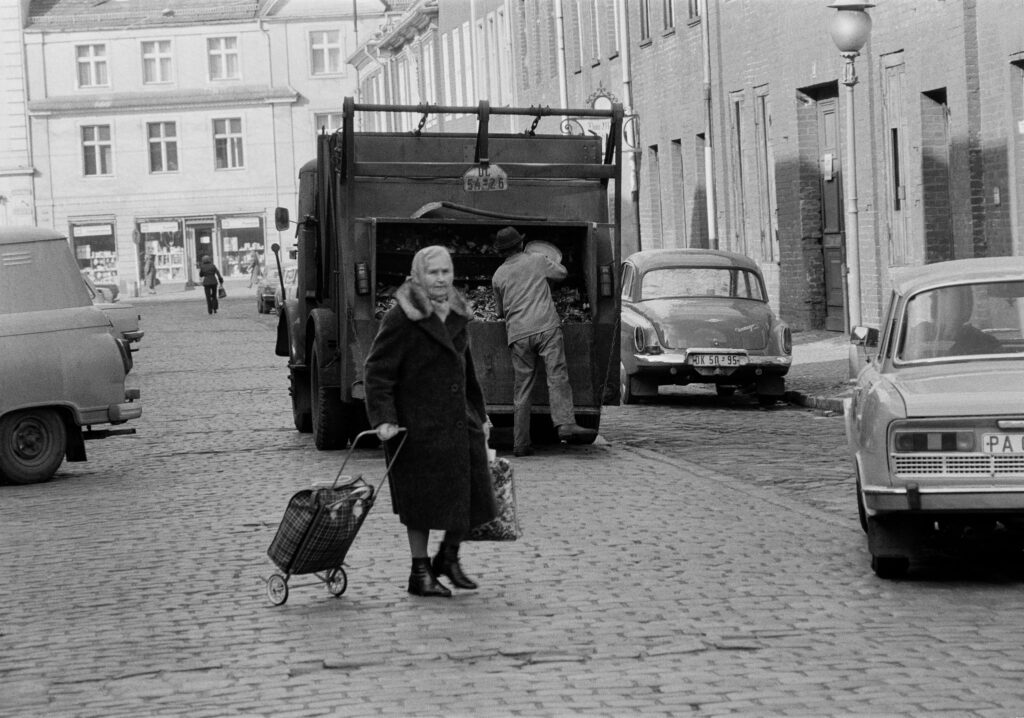
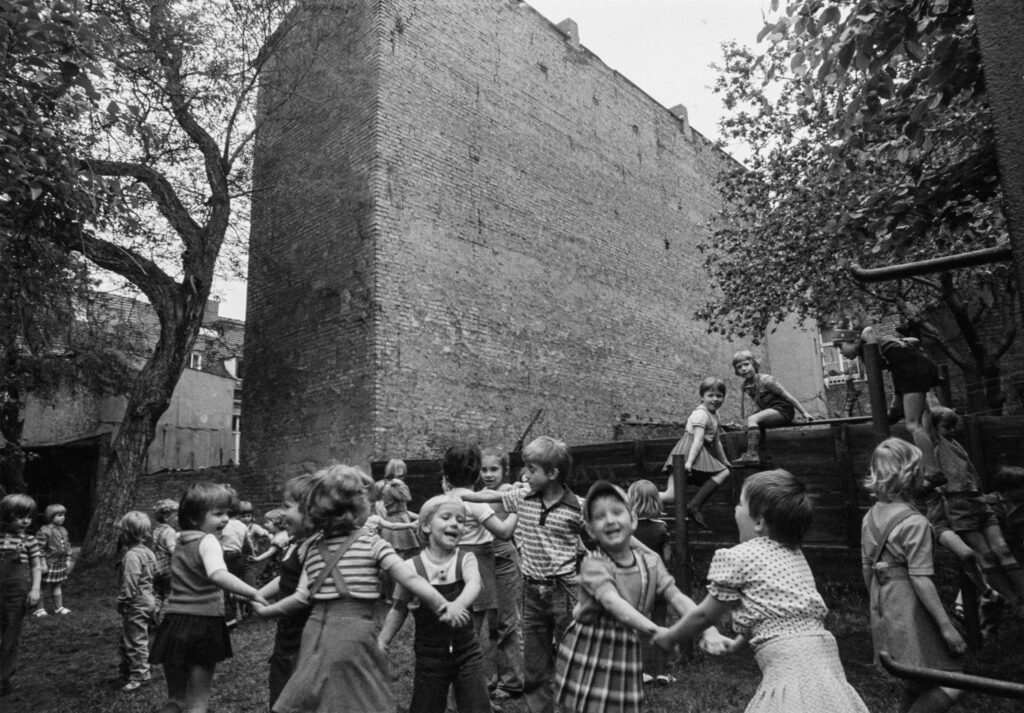
In 1975, the city decided to preserve the Dutch Quarter as a whole and placed it under monument protection in September 1979, but there was still very little progress toward renovation. When the young student from Leipzig focused his lens on the area in 1977/1980, the streets and many apartments were empty, and the neighborhood was already partially abandoned. The aura of demolition hung over the area. In rich details, full of affection for the remaining building substance and those who chose to stay, Thonfeld portrays the everyday life that must go on despite the shortages and ruined facades. He concentrates on the last vestiges of life and recognizes that the quarter “can’t escape in its landscape. It remains in every moment of history — space.”
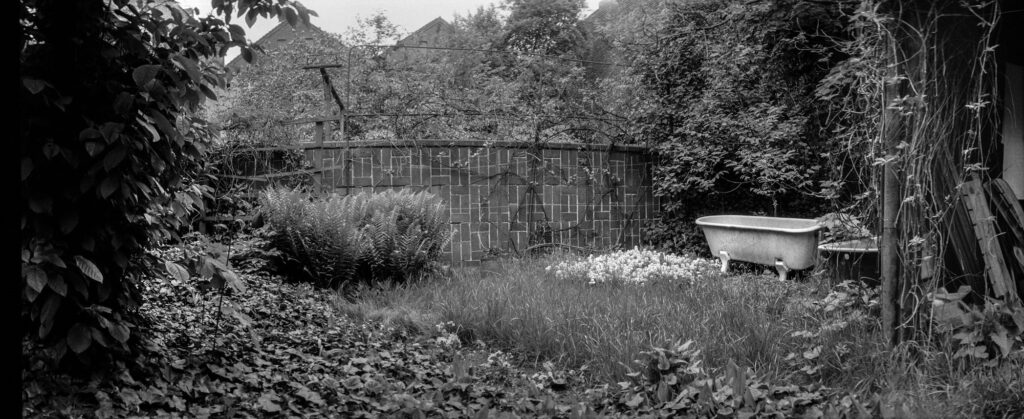
Looking at Eberhard Thonfeld’s impressive images today is like time travel into a lost world full of shades of grey. The photographs serve as artistic documents of a lost epoch, of which only small traces are left. So much has changed. For example, where the Urania is today in Gutenbergstraße 51/72, the Schuke company built organs — the old service elevator is still there. On the corner of Mittel- and Benkertstraße there’s a Japanese restaurant where a bakery once stood. Benkertstraße 23 was a kindergarten, “the young heart of the quarter” als Thonfeld felt then. “The Flying Dutchman” restaurant and Kniesche’s medical supply store (then “Herbert Fischer”) still exist – the last witnesses of a period of change that shaped the beauty und uniqueness we see today. By 1989, 35 buildings had been renovated. After 1989, work continued at a slow pace. By 2014, renovations were nearly complete, and the official status as a redevelopment area was no longer necessary.
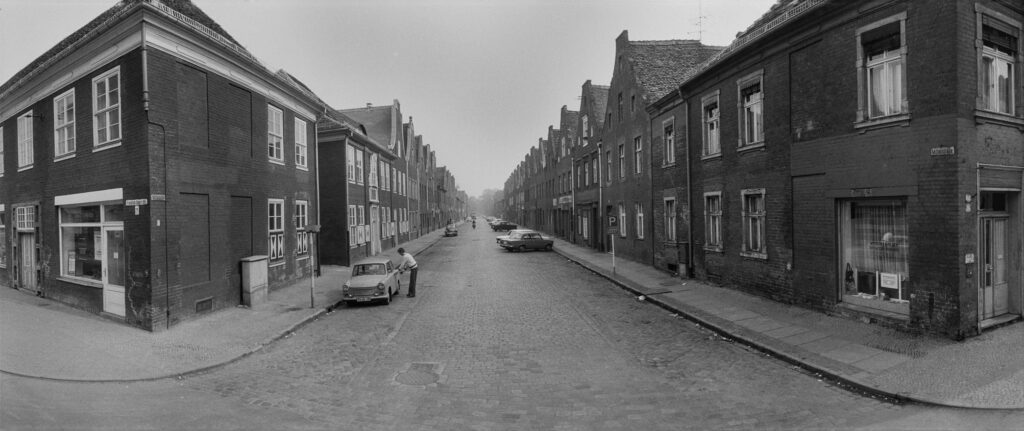
Today the city of Potsdam praises the neighborhood as “the only Dutch architecture ensemble outside the Netherlands”. No matter what perspective we choose as we walk through the area, which people or scenery we meet, whether we sentimentally recall old times or admire the freshly renovated living and working quarter — it’s the same at the end of the 1970’s as for the year 2023: the future of the Dutch Quarter was and is its past.
Curious? A recently published book by the Potsdam Museum and the Friends of the Museum, in cooperation with the Friends of Dutch Culture in Potsdam takes you on a photographic journey to the late 1970’s in the Dutch Quarter.
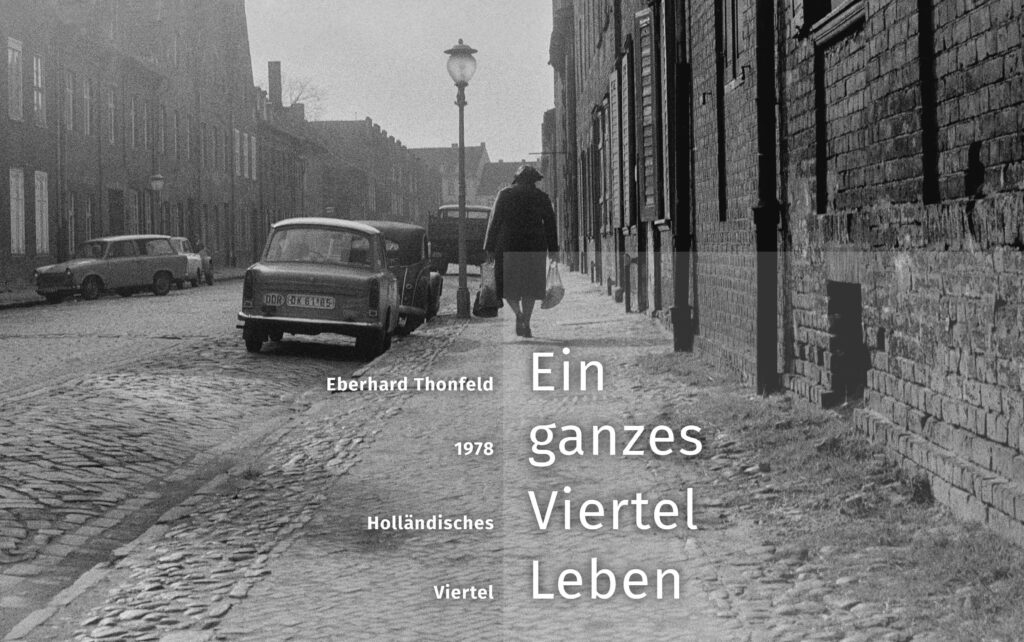
Potsdam Museum – Forum für Kunst und Geschichte, Förderverein des Potsdam-Museums e.V., Verein zur Pflege der niederländischen Kultur in Potsdam e.V. (Hrsg.): Ein ganzes Viertel Leben | Eberhard Thonfeld. 1978. Holländisches Viertel, Potsdam 2023, Photography: Eberhard Thonfeld, Text: René Granzow & Christoph Tempel
– Christoph Tempel und René Granzow in cooperation with the Potsdam Museum – Forum für Kunst und Geschichte
All quotes from Eberhard Thonfeld cited above are derived from an unpublished interview recorded by Susanne K. Fienhold Sheen in 2022.
Header Picture: View over the roofs of the Dutch Quarter, 1978, Potsdam Museum │ Photo: Eberhard Thonfeld

